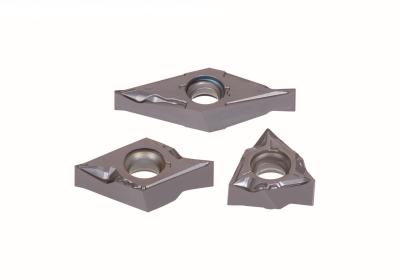
Tungaloy is expanding its MiniForce-Turn, an economical turning tool series, to include the -JS style chipbreaker insert promising efficient chip control and machining stability.
MiniForce-Turn features an innovative double-sided positive insert and unique seat interface for secure location, which is designed to provide free cutting as standard single-sided positive inserts do, while enhancing maximum stability and tool economy.
The new -JS style chipbreaker is designed to promote effective chip control when machining small parts. Its cutting edge incorporates a large inclination angle, which helps produce smooth chip flow and a light cutting condition. This geometry virtually eliminates chip nests, decreasing part scraps and machine downtime, while improving finishing quality. The -JS chipbreaker complements the existing MiniForce-Turn chipbreaker offering and broadens the application range in small part machining. The new chipbreaker is available on six-cornered WXGU0403 inserts and four-cornered DXGU0703 and VXGU09T2 inserts.
At a glance:
Innovative double-sided positive inserts with a cutting action as free as standard positive insert
The cutting edge designed with a large inclination angle to facilitate smooth chip control and light cutting action
Innovative seat interface for secure insert retention and machining stability
Contact Details
Related Glossary Terms
- chipbreaker
chipbreaker
Groove or other tool geometry that breaks chips into small fragments as they come off the workpiece. Designed to prevent chips from becoming so long that they are difficult to control, catch in turning parts and cause safety problems.
- inclination angle
inclination angle
Angle that the cutter edge makes with a plane that is perpendicular to the direction of tool travel. Determines the direction the chip curls.
- turning
turning
Workpiece is held in a chuck, mounted on a face plate or secured between centers and rotated while a cutting tool, normally a single-point tool, is fed into it along its periphery or across its end or face. Takes the form of straight turning (cutting along the periphery of the workpiece); taper turning (creating a taper); step turning (turning different-size diameters on the same work); chamfering (beveling an edge or shoulder); facing (cutting on an end); turning threads (usually external but can be internal); roughing (high-volume metal removal); and finishing (final light cuts). Performed on lathes, turning centers, chucking machines, automatic screw machines and similar machines.

